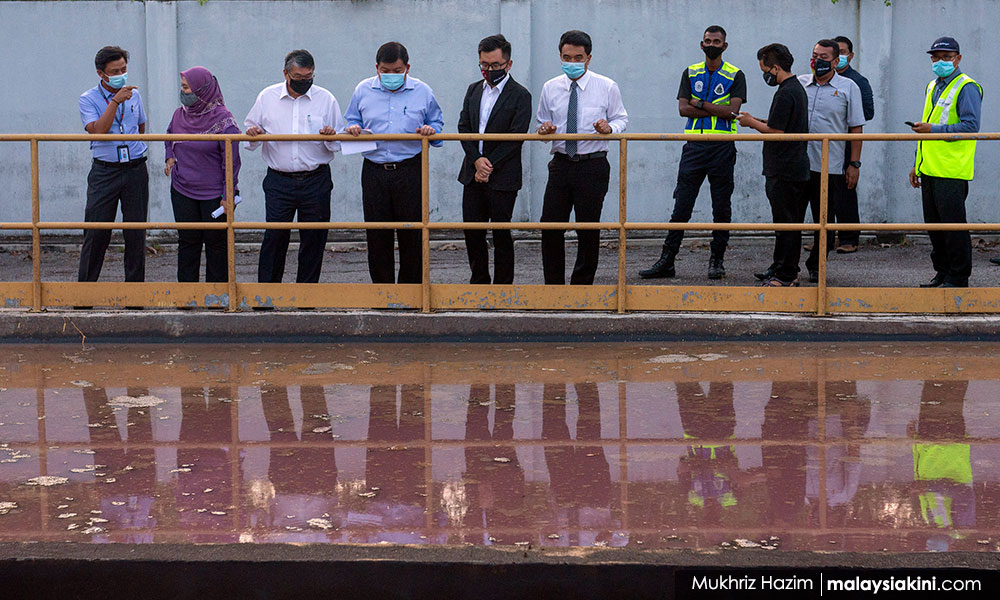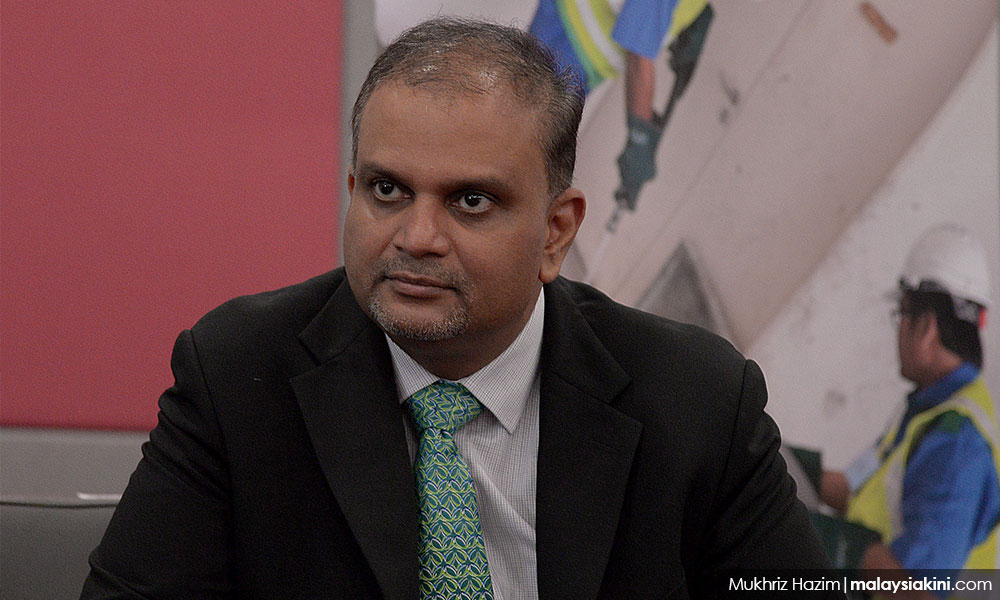There was a flurry of activities last night. Politicians, corporate bigwigs and engineers were making an effort in playing the regular match of finger-pointing a’la fault finding. It was nothing new, and at the rate it is happening, they could even make it a monthly affair.
If previously it was some unscrupulous factories taking a shortcut, it now (allegedly) involves a government-owned company, and one would have thought the stakes would be higher. But no. Unlike directors of factories who were detained and taken to court for remand orders, the rules of the match changed this time – much more lenient in many ways.
The gloves came off at the sitting of the Selangor State Assembly yesterday when the Tourism, Environment, Green Technology and Orang Asli Affairs Committee chairperson Hee Loy Sian landed the first punch. He told Bukit Lanjan assemblywoman Elizabeth Wong that pollution to Air Selangor’s water treatment plants originated from an Indah Water (IWK) treatment plant in Rawang,
Then, the Selangor Water Management Authority (Luas) landed the second - indicating the odour pollution of Sungai Selangor could have come from an unsanctioned effluent discharge at an Indah Water Konsortium facility in Rawang.
It identified the plant as “IWK GBK 225” waste treatment plant in Taman Velox, Rawang, which it said had released the effluents without authorisation through a nearby manhole.

“The distance of IWK plant to the Rantau Panjang water treatment plant is estimated to be 12km,” Luas said in a statement.
Round One to the state government and Round Two to Luas. But IWK got up before the count and came out, fighting pugnaciously – initially defensively but then landed a series of counter blows involving unknown third parties which floored its opponents.
Late into the night, all parties were huddled together as to who is to blame for the water cut, supposedly to be effective from 6pm, but taps in some parts of Petaling Jaya were dry by 5pm.

IWK’s chief executive officer, Narendran Maniam (above) argued that the company could not be held responsible because the releasing of final effluent was halted since last Thursday, after it detected some element of illegal waste that was dumped into the sewerage system.
Its sewage treatment plant (STP), Narendran said, had to contain the flow for the past few days to avoid spillage into the waterways. If this was not executed promptly, the illegal element that came into our plant would have created further detriment to the environment.
So, if this was the case, why did Hee and Luas jump the gun and blame IWK? Should it be considered a technical knockout (TKO)? The blows will continue unabated, but it is we, the consumers who will have to take the punches. This is not the first, and it will not be the last, until something drastic measures are taken. Eventually, the blame will be heaped on illegal factories.

Last week, the assembly was told that there are 5,589 illegal factories operating throughout Selangor, with 869 of them located near rivers. Local Government, Public Transport and New Village Development Committee chairperson Ng Sze Han (above) said that a large portion of them were found downstream, or after the water treatment plant intake points.
Of the 869 illegal factories located near rivers, 546 were under the administration of the Shah Alam City Council, Subang Jaya City Council (23), Klang Municipal Council (20), Kajang Municipal Council (155), Selayang Municipal Council (75), Sepang Municipal Council (two), Kuala Langat Municipal Council (27), Kuala Selangor District Council (14) and Hulu Selangor District Council (seven).
“Unlicensed factories are classified as those that have a temporary business licence but have yet to meet the technical conditions, such as land status, zoning or planning permission. They are not factories carrying out illegal activities,” Ng said.
Here is the question: If they have not met technical details and do not have planning permission, why are they allowed to operate in the first place? While local councils are quick to tear down awnings built over their porch, why isn’t similar treatment meted out to the offenders?
Isn’t Ng’s explanation akin to saying that people are driving cars without licence, but are competent enough to drive them?
If they are illegal, why shouldn’t they be ordered to close? Why are they allowed to operate? Why are they not floored with a sucker punch? Political considerations? Are their cables so strong that the authorities have deemed them untouchable, or is someone being amply rewarded for closing one eye?
Residents have had enough. The water supply disruptions cause so much hardship, and in the days of the conditional movement control order, we can’t even travel to areas with water. While many are suffering in silence, a few are seeing the lighter side.
Some suggested that the new tagline for Air Selangor should be: “Everyone can cry.” But last night, one Phoon Chi Ho tweeted: “I think AirAsia can easily change their business model selling water to the people of Selangor and still call themselves AirAsia!”
Laughs aside, we had enough of the state government, and local authorities should stop pussy-footing with illegal factories. Immediate and urgent action must be taken – like yesterday.
R NADESWARAN, like millions of other Selangorians, has suffered due to the inadequacies and fallacies of the government and expects a permanent end to this periodic agony. Comments: citizen.nades22@gmail.com - Mkini
The views expressed here are those of the author/contributor and do not necessarily represent the views of MMKtT.




No comments:
Post a Comment
Note: Only a member of this blog may post a comment.